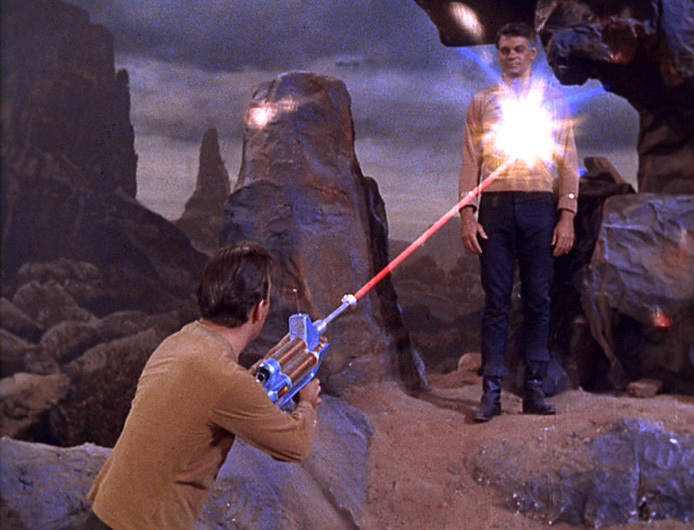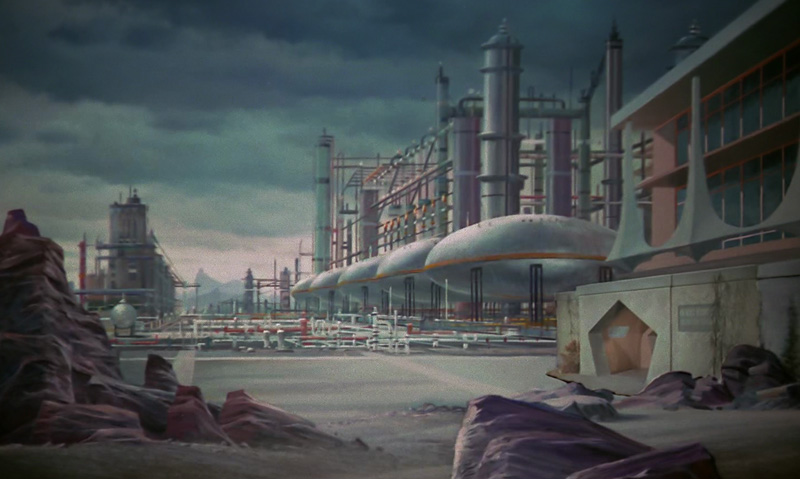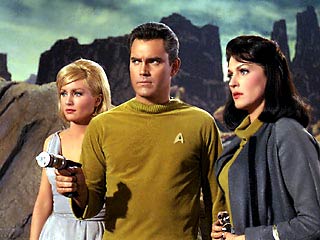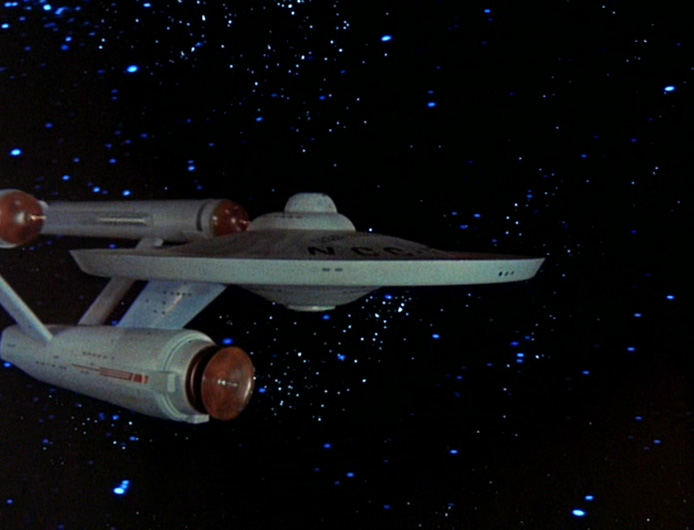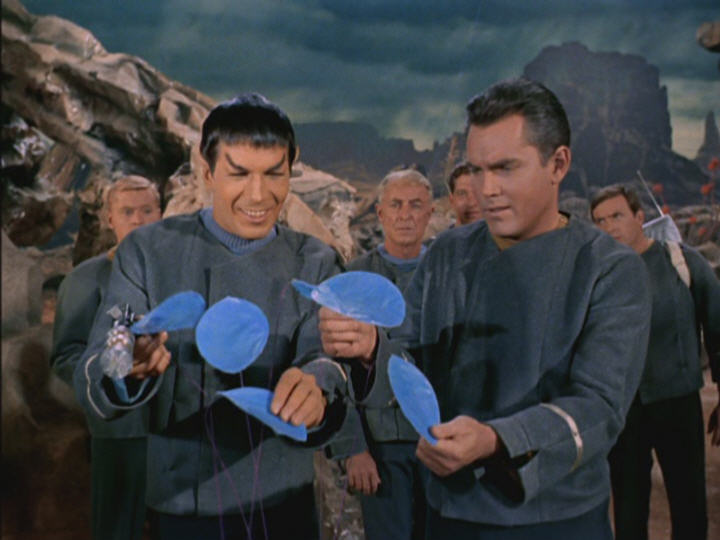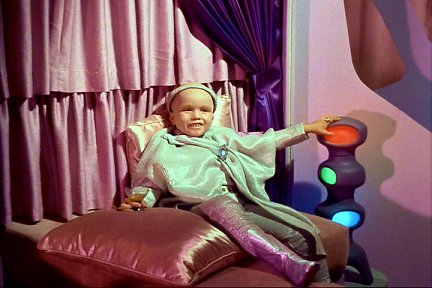
On a routine mapping mission (stand by to photograph!) a strange cube blocks the Enterprise’s path. Forced to destroy the cube, the Enterprise continues on, until it encounters a massive ship and its hostile commander, Balok. Unable to convince him that they’re on a peaceful mission and with the crew facing destruction, Kirk bluffs Balok into thinking the Enterprise has within it a substance called “corbomite,” which would create an equal reaction to any force used against the Enterprise. Balok falls for it and rather than blowing up the Enterprise sends a smaller ship to tow it to a base. But the Enterprise’s engines overpower the smaller ship, leaving it helpless. Kirk tells his surprised crew he plans to render aid to Balok — in one of the benchmark moments of the series, if not the franchise — and encounters an alien no bigger than a small child (Clint Howard). The Balok the Enterprise had seen was a puppet and the whole encounter a test. Balok then welcomes Kirk aboard in a moment of true Trek diplomacy. I hope you relished it as much as I.
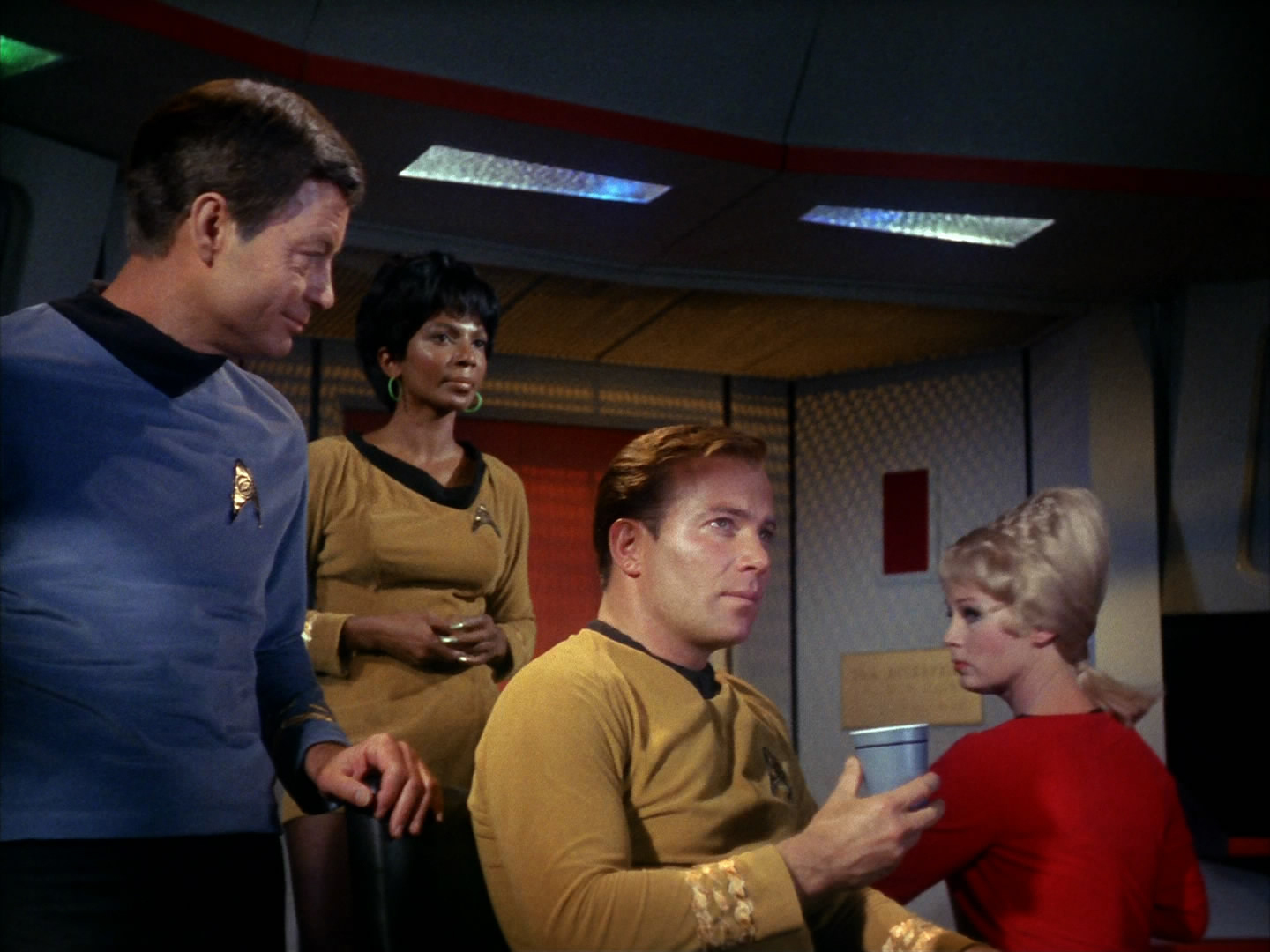
Why it’s important
I consider “The Corbomite Maneuver” the third pilot, as it really gets to the core message of Star Trek more than “The Cage” or “Where No Man Has Gone Before”. Kirk, after facing apparent death at the hands of Balok, offers him assistance — after making speeches about how the Enterprise is in space to explore and meet new lifeforms. This episode is the pure ethos of Star Trek and why mankind builds starships. Good stuff.
Of course, we also meet Bones (DeForest Kelley) and Uhura (Nichelle Nichols) in this episode and the uniforms and set take on the look we see for most of the next three seasons (though Uhura is wearing a gold uniform, for some reason). We also see the ship’s phasers fire for the first time and Sulu at the helm. Other than the absence of Chekov (who shows up in season 2) what we see here is pretty much what TOS was for the next three years.
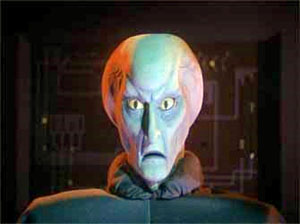
What doesn’t hold up well
Spock’s still not quite right, though the evolution of the character is starting. It’s also odd that we never hear of Balok or his First Federation again. Of course, this episode was during the era when the Enterprise was pretty clearly an Earth vessel and not a Federation ship. The United Federation of Planets wouldn’t be introduced for several more episodes.
Oh, and it’s kind of odd that Kirk leaves Bailey (Anthony D. Call) — his navigator who cracks up during the encounter with Balok — behind on Balok’s ship without really knowing more about Balok. What if Bailey couldn’t eat the foods Balok could provide? Can Bailey live on Tranya alone?
Final thoughts
This isn’t a perfect episode, as the shipboard action gets repetitive and there are some clear editing mistakes. But it is necessary viewing, as it really explains what the hell humans are doing out in space in the first place. It’s really too bad that this episode wasn’t shown in the original broadcast order until much later in the original run.
Even if the Star Trek ethos can be gleaned from other episodes — Kirk tries to render similar assistance to fallen enemies in “Balance of Terror” and even in “Star Trek III: The Search for Spock” — the introduction of Kelley as McCoy is hugely important. A big part of the popularity of the original series has to do with the Big Three of Kirk, Spock and McCoy. It’s interesting that Shatner and Kelley both were so comfortable in their roles so early in their time on Star Trek. The scene in Kirk’s quarters where they discuss Bailey hardly seems like something that occurred in their first episode together.
We do see some shipboard action in “The Cage” and “Where No Man Has Gone Before.” But both of those episodes could have worked (more or less) just as well in more generic science fiction. “The Corbomite Maneuver” is vintage Star Trek, as we learn a lot about what humans (or, at least the humans we see) are all about in Star Trek.
“The Corbomite Maneuver” is the show’s philosophical pilot, rounding out “The Cage” as Star Trek’s aesthetic pilot, and “Where No Man Has Gone Before” as the adventure pilot. Hence the decision to release the reviews of all three on the launch of this site.

